Epic Guide to Revolutionary War National Park Sites! Find out which National Park Sites share the history of the American Revolutionary War.

Revolutionary War National Park Sites
The American Revolution: A History Remembered through the National Parks Service.
The American Revolution or Revolutionary War began in 1775 when the British held Thirteen Colonies of America rebelled against British governance.
The war, which was fought across the Thirteen Colonies, spanning eight years, is remembered and interpreted through 27 sites protected by the National Parks Service.
The Revolutionary War involved more than 230 battles, skirmishes, and incidents. The National Parks Service, or NPS, has preserved 27 sites that tell the story of the American Revolution.
The sites consist of battlefields, fortifications, and buildings that all contributed to the founding of the United States of America.
Each of the Revolutionary War National Park Sites that the National Parks Service protects tells a piece of the story of how the United States of America came into being. It is a tale of treason and the triumph of a nation forged on the battlefield.
Here after a brief history of events before the start of the war, we explore the rich and bloody history of the American Revolution, told through the Revolutionary War National Park Sites that have preserved these historic locations.
What Caused the Revolutionary War?
The settlement of Jamestown, Virginia, founded in 1607, was the first British colony in the Americas. For over a century, the Americas grew from a struggling settlement in Virginia, into a thriving collection of Thirteen Colonial territories. The Thirteen Colonies were:
- New Hampshire
- Massachusetts
- Connecticut
- Rhode Island
- New York
- New Jersey
- Pennsylvania
- Delaware
- Maryland
- Virginia
- North Carolina
- South Carolina
Tensions between Britain and the American colonists had been rising for ten years before war was declared.
Tensions between the Americans, or Patriots as they would come to be known, and the British Crown were due to several reasons.
One of the major contributing factors to the outbreak of war was the increased taxation on the colonies by the Crown with the Stamp Act of 1765. The British were severely over-indebted and sought to use the colonies to help them get out of it.
Prelude to War
“No taxation without representation” became the rallying cry for the colonists fed up with British authority in the colonies.
In 1770, the tensions turned violent when the British opened fire on colonists during a riot in Boston, known as the Boston Massacre. Three years later, The Tea Act of 1773, was passed.
The Tea Act was another attempt by the British to solve their financial crisis. The Tea Act is perhaps the most well-known, as it resulted in the infamous Boston Tea Party, where colonists dumped tons of tea from British ships into the Boston Harbor.
The Continental Congress was formed in 1774 to address the issues the colonists had with the Crown.
The congress included George Washington, Samuel Adams, John Jay, and Patrick Henry. War broke out before the congress could meet again, and when they did convene, they formed the Continental Army.
The National Parks Service has in its care the home of Samuel Adams at the Adams National Historical Park. The park preserves the home and includes a church, cemetery, and the homes of two American presidents, Samuel Adams and John Quincy Adams.
Who Fought in the Revolutionary War?
The war was between the British Government and the American colonists who wanted to be independent of a government thousands of miles away.
You will recognize a few of the generals who fought on the Patriot's side, as it was during the Revolutionary War that America's founders rose to prominence.
The founders of the new nation of America were heroes, who would become known as the Founding Fathers, remembered for all time.
During this war, General George Washington rose to prominence through his adept military strategy. He would become the first President of the United States of America.
“Give me liberty, or give me death!” - Patrick Henry, 1775
A Timeline of the American Revolution, through America’s National Parks
Below is a timeline of the Revolutionary War explored through the National Parks that preserve sites where significant battles or moments took place and where the history of America is protected.
1775
Before the Continental Congress could meet for a second time, the first shots of the revolution were fired at the Battles of Lexington and Concord.
April 1775 - Minute Man National Historical Park
On April 19th, 1775, hundreds of British soldiers marched to Concord, Massachusetts, to take an arms cache from the colonists. The unsuspecting colonists were alerted to the impending attack by Paul Revere and Tanner William Dawes on April 18th. The warning provided enough time for the colonists to mobilize their militia.
The park gets its name from the colonial militia Minute Men, who were elite fighters that could assemble quickly. The Minute Men took to the town greens of Concord and Lexington to await the arrival of the British.
The British forces encountered resistance at Lexington, where 70 militiamen had assembled. The militia was ordered to disperse, outnumbered 10 to 1. Who fired the first shot remains unknown, but chaos ensued as the British fired on the militia.
The British moved on to the town of Concord, It was at the North Bridge in Concord that the first shot of the American Revolution, referred to as “the shot heard around the world” was fired. By the time the battle ended, over 3,500 militiamen had answered the call to arms at Lexington and Concord.
The Minute Man National Historical Park protects the site of that first shot on the North Bridge, along with Battle Road, where you can take the path the militia and British fought along. To commemorate the battle at Lexington, the statue of a Minute Man now stands on the historic location of the town green.
The park is also home to several historic structures from the time, such as homes and a tavern.
June 17th - Bunker Hill, Boston National Historical Park
A few months after the start of the Revolutionary War, the newly established Continental Army and the British faced each other again. The Battle of Bunker Hill took place on the hills surrounding Boston. Most of the fighting happened on Breed's Hill.
Despite being a British victory, the Continental Army inflicted over 1,000 casualties on the British.
The site where the fierce battle of Bunker Hill took place is part of the Boston National Historical Park. A 221-foot stone obelisk was built at the top of Breed’s Hill to commemorate the battle.
Because the American Revolution began in Boston, the park is home to many important monuments and sites.
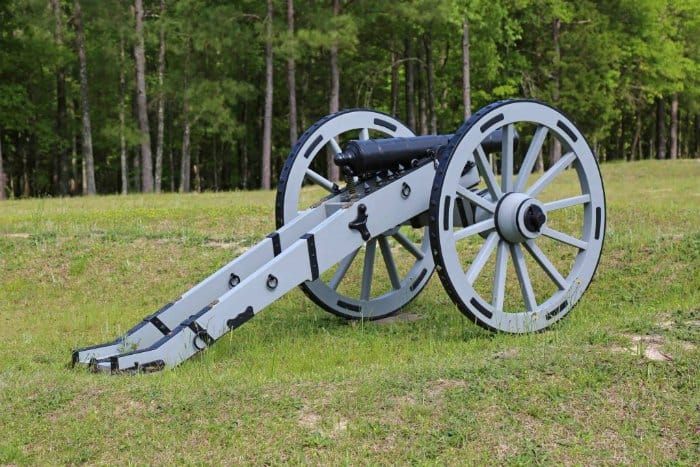
November 19th - Ninety Six National Historic Site
The Ninety Six National Historic site is particularly interesting! It is the home of an original earthen star fortification built in 1780.
The site witnessed two battles where over 100 lives were lost. The first battle to be fought outside of New England happened in a small settlement in South Carolina, Ninety Six.
Ninety-Six was a small but strategically important Loyalist-controlled settlement. It was targeted by the American Patriots when an American shipment of gunpowder was seized by the British.
The gunpowder was intended for the Cherokee as an attempt to sway them to the Patriot's cause.
A brief battle took place on November 19th, in the field of John Savage’s Plantation. You can visit the battleground at the Ninety Six Historic Site.

1776
1776 is the year the Declaration of Independence was drafted.
Twelve of the Thirteen Colonies declared their independence from the British Crown on July 4th, 1776.
During the second year of the war, the fighting intensified and spread from the Northern Colonies into the South.
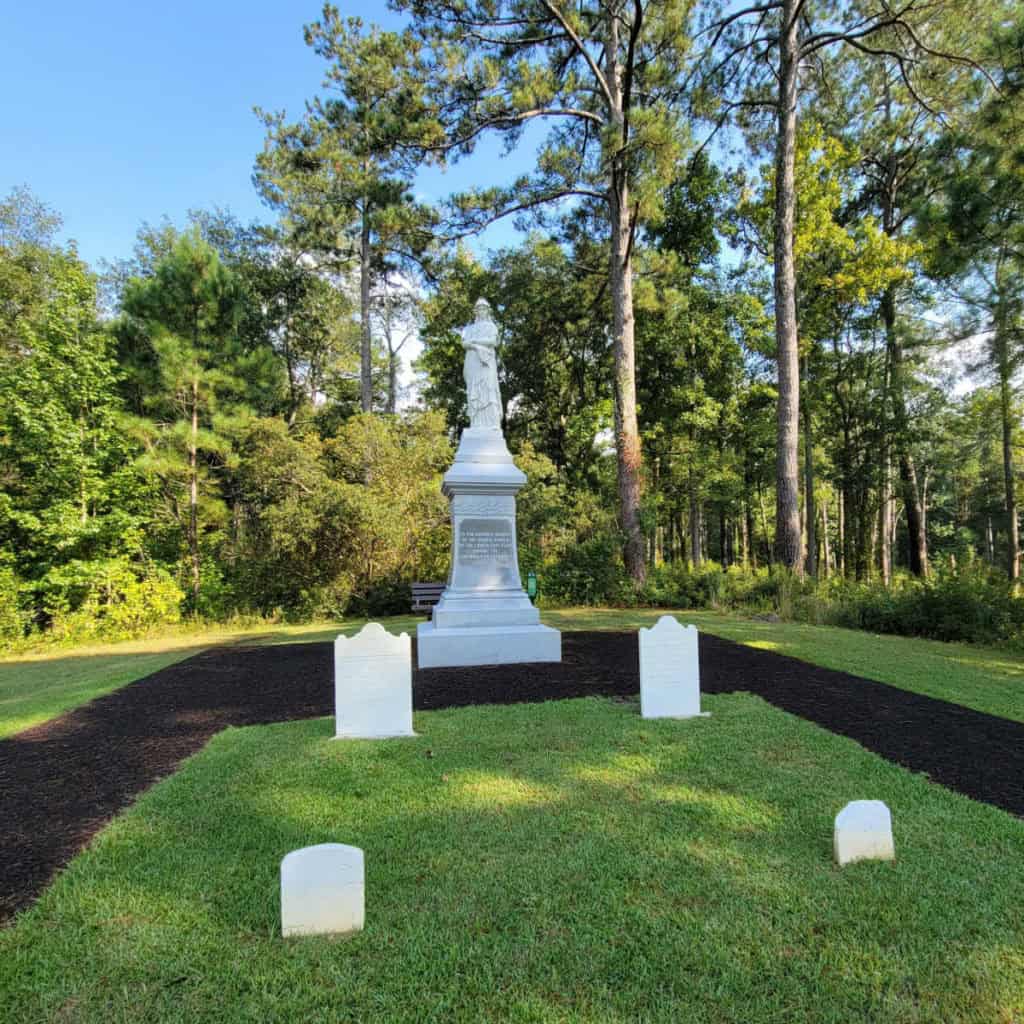
February 27th - Moores Creek National Battlefield
The first battle of 1776 took place at the site now preserved by the National Parks Service at Moores Creek National Battlefield.
The Battle of Moore's Creek Bridge was a significant American victory because it convinced the first of the Thirteen Colonies to break away from the Crown.
Moores Creek National Battlefield has a reconstruction of the bridge where Loyalist’s charged what they believed to be a small Patriot militia.
Roughly 1,000 patriots were waiting for the Loyalists. As the Loyalists charged across the bridge, the Patriots opened fire. Over 50 Loyalists died, and over 800 were captured.
The park was created in 1926, and includes the roads that the Loyalists and Patriot militia would have used. The park encompasses the battlefield and the bridge, where many lost their lives.

June 16th- Fort Sumter and Fort Moultrie National Historical Park
By June 1776, the British had evacuated Boston. Plans were in motion for the drafting of the Declaration of Independence.
On June 16th, the British Royal Navy attempted to gain control of Charleston Harbor in what would become known as the Battle of Fort Sullivan.
When the Royal Navy attacked the half-built Fort Sullivan, they expected it to be an easy conquest. They were sorely mistaken.
The British attacked Fort Sullivan for nine hours but had to retreat. Charleston remained in the hands of the Patriots.
This particular National Historical Park played a role in many defining moments throughout American history.
Fort Sullivan, later named Fort Moultrie, was the captured Africans' first stop. The newly enslaved were processed at Fort Sullivan before being taken to the other colonies.
The original fort, built using Palmetto Logs, was destroyed and rebuilt several times over the next few hundred years.
July 4th, Independence National Historical Park
On July 4th, 1776, the Declaration of Independence was adopted by the Second Continental Congress, becoming the defining moment for the nation.
This momentous moment has been preserved and protected at Independence National Historical Park.
The Declaration of Independence was written by five men. Thomas Jefferson wrote the bulk of the Declaration, assisted by John Adams, Benjamin Franklin, Robert R. Livingston, and Roger Sherman.
The document was written to set forth the intentions of the American colonies and the reasons for their independence from Great Britain.
The Declaration was drafted and revised, signed, and adopted in buildings preserved in the Independence National Historical Park.
Here you can visit Congress Hall, Independence Hall, the Symbolic Liberty Bell Tower, and much more!
December - Morristown National Historical Park
In December of 1776, General George Washington decided to move his forces into New Jersey.
The British had captured much of New York earlier in the year at the Battle of Long Island. Washington moving his forces so close to the British was risky and bold.
Washington's troops fought two battles in the area; The Battle of Trenton on December 26th and the Battle of Princeton on January 3rd, 1777. Both of the battles were American victories.
Washington decided to make his winter camp at what is now Morristown National Historical Park. This site would be used again from the winter of 1779 to 1780.

1777
1777, the third year of the Revolutionary War, was when the British changed their focus in an attempt to isolate the Northern Colonies from the South.
The British hoped they could isolate the North and rally the loyalists in the South to defeat the Patriots. The British forces traveled from Canada towards the Southern colonies, battling the Continental Army.
What began as a civil war turned into an international conflict in 1777 when the French, influenced by the Patriot's impressive win at the Battles of Saratoga, joined the fray on the side of the Americans. Their help would not arrive until 1778.
August- Fort Stanwix National Monument
In August, the strategically important Fort Stanwix came under siege by the British.
The fort is known as the ‘fort that never surrendered’ because despite being outmanned by the British, the Patriot commander, Colonel Peter Gansevoort refused to surrender.
Fort Stanwix was built in 1758 to protect a trade route that connected the Mohawk Valley to the Hudson River. It came under siege by the British and their allies, Native American Warrior. Gansevoort would not surrender.
Benedict Arnold came to the aid of Gansevoort. Arnold devised a plan that led to the British abandoning their siege of Fort Stanwix. Later in the Revolutionary War, Arnold would betray America and fight for the British.

September 19th and October 17th, Saratoga National Historical Park
The Saratoga National Historical Park preserves and interoperates the site of not one but two battles of the Revolutionary War.
The Battles of Saratoga fought on September 19th and October 17th, 1777, are considered the turning point of the revolution.
The first battle took place in the fields of Freeman’s Farm, while the second battle raged in Bermus Heights.
The park preserves the main battle areas, and two historic houses. The park also protects the site where for the first time in history, 6,000 British troops surrendered.
December- Valley Forge Historical Site
Towards the end of 1777, the British had occupied the Patriot’s capital of Philadelphia.
In another bold move, during the Winter of 1777, George Washington moved his forces to what is now the Valley Forge Historical Site, which is only a day's march from the capital.
At Valley Forge, the exhausted Continental Army built log cabins for themselves, regrouped, and retrained.
The Continental Army at Valley Forge received training from a Prussian (Modern-day Germany) officer called Baron Friedrich von Steuben.
The Americans left Valley Forge prepared to fight with the French as allies in 1778.
There is perhaps no other site equal in significance in providing a sense of how the Continental Army became the force that would bring America its independence.
The Valley Forge Historical Site gives us a glimpse of how the soldiers lived and the inspired leadership of George Washington.
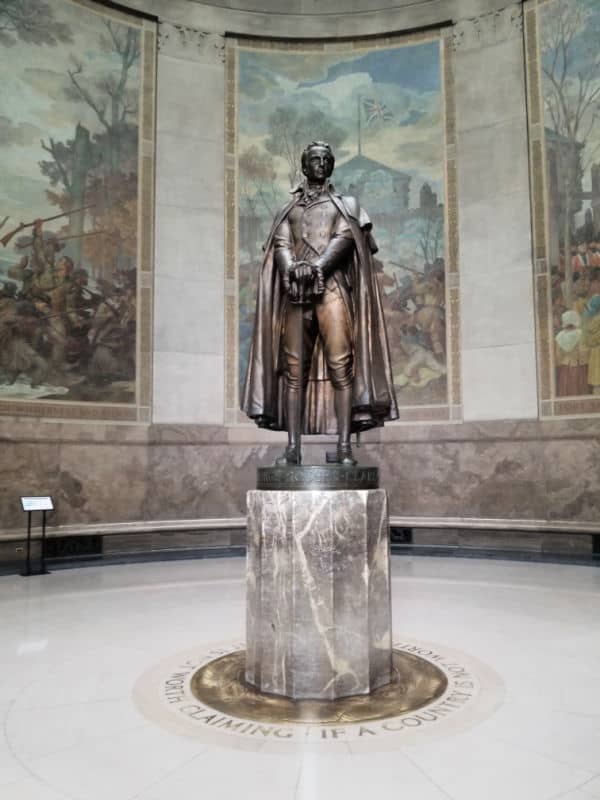
1778
1778 was a turning point in the Revolutionary War. The war in the North stalled, and the British turned to the Loyalists, whom they assumed were the majority in the South.
The British presence in the South caused the colonists to turn against them instead of toward them.
During 1778 and the Southern Campaign, the British occupied Savannah, Georgia.
The Patriot's military leaders in the South, Nathanael Greene, and Daniel Morgan, tended towards guerilla- warfare tactics while the British struggled with their supply lines.
May to December 1778 - George Rogers Clark National Historical Park, Indiana
George Rogers National Historical Park is named for the colonel who, with only 170 men, succeeded in recapturing several posts occupied by the British.
Clark managed to persuade the Kaskaskia and Cahokia to join the American cause. Clark is celebrated as a pioneer of American expansion into the country west of the Appalachian Mountains.
Clark, fed up with raids being carried out in Kentucky, (where he was from) organized the Kentucky Militia to strike the source of the raids, which was in Illinois.
From May until December of 1778, Clark fought his way through the territory and waged psychological warfare on the soldiers of Fort Sackville, Vincennes.
Clark and his 170 frontiersmen journeyed through the dead of winter towards the British held Fort Sackville. Clark convinced the British soldiers in the fort that he had over 500 men with him.
Clark then dug trenches around the fort and tunnels filled with explosives. The British surrendered on February 25th, 1779.
The exact location of Fort Sackville is not known. It is believed to have been within the park, near the Clark Memorial, erected in 1931 to commemorate Clark's successes during the revolution.

1779-81
The Patriots suffered several setbacks from 1779 to 81. It was during this time that the prominent Continental Army General Benedict Arnold betrayed the Patriots' cause and turned to the side of the British.
The British managed to occupy Charleston, South Carolina in 1780, and a defeat at the Battle of Camden Courthouse in August 1780 severely hindered the Patriot's efforts in the South.
It was in 1780 that Nathanael Greene was placed in charge of the Continental Army's efforts in the South, which turned the tide in favor of the Patriots by 1781.
October 1780 - Kings Mountain National Military Park
The Patriots had taken a knock when the British captured Charleston in May of 1780. They would not have another victory until the one at Kings Mountain National Military Park.
The Battle of Kings Mountain ‘turned the tide of success’, according to Thomas Jefferson.
The Battle of Kings Mountain was between American Loyalists and American Patriots known as Overmountain Men.
The Overmountain men were residents of Kentucky and Tennessee, described by the Loyalists as hardy and brave. No foreign soldiers were fighting on the rocky outcrop that is Kings Mountain.
Although short, the battle lasted only an hour, it was a significant battle. Today the battle is commemorated at Kings Mountain National Military Park. Here you can walk the 1.5 miles of the battlefield.
A second park, the Overmountain Victory National Historic Trail protects 330 miles through Virginia, Tennessee, North and South Carolina where the Overmountian Men would have trekked across towards Kings Mountain.
January 1781 - Cowpens National Battlefield
Shortly after their success at Kings Mountain, the Americans were triumphant again during the Battle of the Cowpens. The battle is significant not only because of the victory but in how the Patriots achieved it.
The Patriot General Daniel Morgan executed one of the few successful military tactics of Double Envelopment; only a few throughout history have been successful. A double Envelopment is when both flanks are attacked simultaneously.
The British under the command of the hated General Tarleton fought the Continental Army along the Green River Road or Mills Gap Road.
The site of this important Patriot victory has been preserved at the Cowpens National Battlefield.
March 1781 - Guilford Courthouse National Military Park
The Patriot's winning streak was not to last. The Battle of Guilford Courthouse would be a technical British Victory but tactically, it set the scene for the American victory of the Revolutionary War.
The Battle of Guilford Courthouse lasted no more than 90 minutes. The battle ended with the patriot general Nathanael Greene retreating and the British General Cornwallis losing 25% of his army.
This loss caused Cornwallis to change tactics and move to Virginia, where he would be defeated.
The Guilford Courthouse National Military Park, designated in the 1800s, preserves 250 acres of the main battleground. Included is Salisbury Road, where the majority of the fighting took place, and a monument to Nathanael Greene.

May to June 1781 - Ninety Six National Historic Site
The longest siege of the Revolutionary War took place at the Ninety Six Historic Site. By this time, the earthen Star Fort had been built.
The Americans laid siege to the fort, dug a series of siege trenches, and erected a 30-foot tower so that they could fire directly into the fort. The Americans were unsuccessful in their attempt to take the fort.
The British burned the settlement and filled in the American's siege lines when they abandoned the fort in July 1781. The British could not destroy the Star Fort, which incredibly can be visited today at the Ninety Six Historic Site.

September to October 1781 - Yorktown Battlefield Part of Colonial National Historical Park
Yorktown Battlefield in Colonial National Historical Park is one of the most significant battlefields in American history. It was here that the final battle of the Revolutionary War, in which America gained its independence, took place.
Two of America’s Founding Fathers fought at the site. General George Washington led the Continental Army to victory at Yorktown.
With the help of the Patriot and French Allies, Washington laid siege to the British. The siege lasted from September 28th to October 19th, 1781.
The siege ended with the Battle of Yorktown, where Alexander Hamilton had helped set the scene for the British surrender.
The Yorktown Battlefield interprets these events and preserves the site where British military action in the Thirteen Colonies ended.
Today the route to the victory at Yorktown, taken by George Washington and his French ally General Rochambeau is protected by the Washington-Rochambeau Revolutionary Route National Historic Trail.
The National Park Service has the home of Alexander Hamilton in the Hamilton Grange National Memorial under its protection.
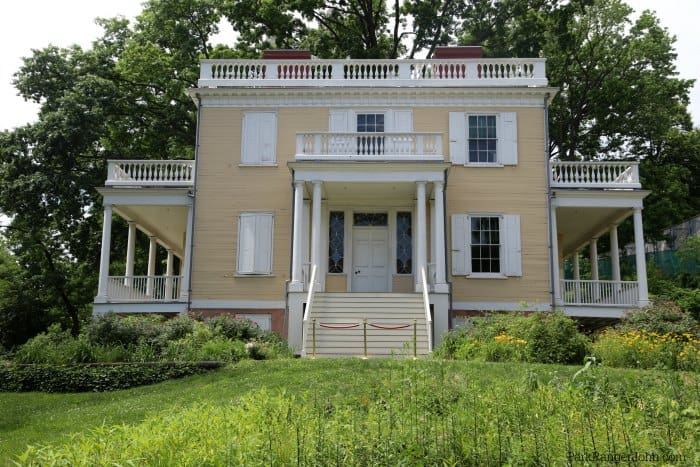
The United States of America is Born
After their defeat at Yorktown, the British knew that their rule over the colonies was over. American independence had been hard-fought and won. Officially, the war ended two years after the Siege and Battle of Yorktown, on September 3rd, 1783, when the Treaty of Paris was signed.
The story of how America came into being is told through the sites protected by the National Parks Service. You can stand where George Washington stood and fought, and where so many people lost their lives fighting for their Independence.
List of Revolutionary War National Park Sites
- Boston National Historical Park
- Charles Pinckney National Historic Site
- Fort Stanwix National Monument
- George Rogers Clark National Historical Park
- George Washington Birthplace National Monument
- Hamilton Grange National Memorial
- Hopewell Furnace National Historic Site
- Independence National Historical Park
- Longfellow House - Washington's Headquarters National Historic Site
- Lower Delaware National Scenic & Wild River
- Morristown National Historical Park
- Prince William Forest Park
- Saratoga National Historical Park
- Springfield Armory National Historic Site
- Thaddeus Kosciuszko National Memorial
- Thomas Stone National Historic Site
- Valley Forge National Historical Park
- Yorktown Battlefield, Colonial National Historical Park
We hope you enjoyed this list of Revolutionary War National Park Sites make sure to check out our posts on Civil War National Park Sites, World War 1 National Park Sites, and World War II National Park Sites.
Learn more about National Park Passes for parks that have an entrance fee.
$80.00 - For the America the Beautiful/National Park Pass. The pass covers entrance fees to all US National Park Sites and over 2,000 Federal Recreation Fee Sites for an entire year and covers everyone in the car for per-vehicle sites and up to 4 adults for per-person sites.
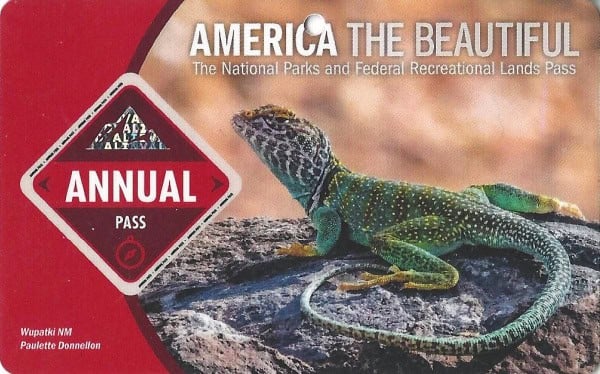
Buy your pass at this link, and REI will donate 10% of pass proceeds to the National Forest Foundation, National Park Foundation, and the U.S. Endowment for Forestry & Communities.
National Park Free Entrance Days -Mark your calendars with the five free entrance days the National Park Service offers annually.

For a fun adventure check out Escape Campervans. These campervans have built in beds, kitchen area with refrigerators, and more. You can have them fully set up with kitchen supplies, bedding, and other fun extras. They are painted with epic designs you can't miss!
Escape Campervans has offices in Vancouver, Seattle, Portland, San Francisco, Las Vegas, Los Angeles, Phoenix, Salt Lake City, Denver, New York, and Orlando
Make sure to follow Park Ranger John on Facebook, Instagram, Pinterest, and TikTok

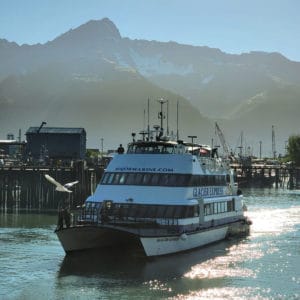

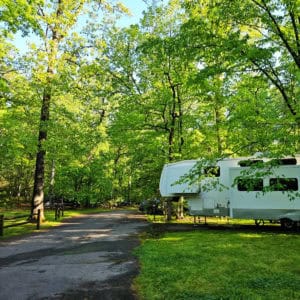

Leave a Reply